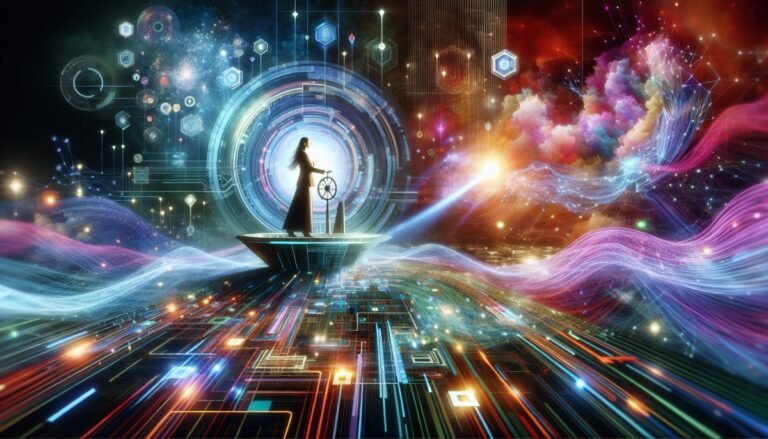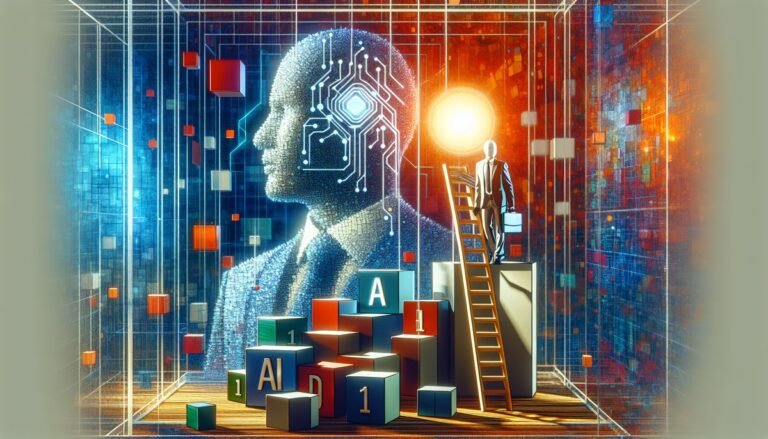In the ever-evolving landscape of energy management, the integration of AI in Microgrids is nothing short of transformative. By blending cutting-edge technology with sustainable practices, AI is not just enhancing the efficiency of energy distribution but also fortifying the resilience of microgrid systems against unforeseen disruptions. Imagine a world where your community’s energy needs are met with pinpoint precision and unwavering stability. That’s the promise AI brings to microgrids. As you delve into these five innovative ways AI is reshaping cost and resilience dynamics, prepare to uncover how this technology is setting new benchmarks in energy autonomy and sustainability. Whether you’re an industry veteran or a curious newcomer, these insights are poised to illuminate the path forward in smart energy management.
1. Optimizing Energy Distribution with AI Algorithms
One of the most compelling ways that AI in Microgrids can revolutionize energy management is through the optimization of energy distribution. AI algorithms, particularly those based on machine learning, can analyze vast amounts of data to predict energy demand patterns. This predictive capability allows microgrids to distribute energy more efficiently, adjusting supply in real-time to match fluctuating demand.
Consider a scenario where a community relies on a microgrid powered by renewable energy sources like solar panels. AI-driven systems can forecast cloudy days or peak demand hours, enabling preemptive adjustments in energy distribution. This not only reduces waste but also minimizes the need for costly backup energy sources, effectively cutting costs and bolstering the resilience of the microgrid. By integrating AI in microgrids, communities can achieve a more sustainable and cost-effective energy solution.
2. Enhancing Predictive Maintenance for Microgrid Components
AI in microgrids also plays a pivotal role in enhancing the durability and reliability of grid components through predictive maintenance. Traditional maintenance schedules often lead to either over-servicing or unexpected failures. AI technologies, however, allow for condition-based maintenance by continuously monitoring the health of microgrid infrastructure.
Machine learning models can detect anomalies and predict equipment failures before they occur, ensuring timely interventions that prevent costly downtimes. For example, sensors can send real-time data about the performance of batteries or inverters to an AI system that identifies early signs of wear and tear. This proactive approach not only extends the lifespan of essential components but significantly reduces maintenance costs, enhancing the overall resilience of the microgrid.
3. Facilitating Demand Response Strategies
Demand response strategies are crucial for balancing the load on a microgrid, and AI in microgrids can significantly enhance these strategies. By utilizing AI to analyze consumption patterns, microgrids can implement automated demand response programs that adjust the energy usage of various devices in real-time, based on grid conditions and energy prices.
Imagine a residential area where smart thermostats, connected to an AI-driven system, automatically adjust heating or cooling settings during peak load hours. This not only alleviates pressure on the grid but also results in cost savings for consumers. By leveraging AI, microgrids can dynamically balance supply and demand, enhancing efficiency and supporting a more resilient energy infrastructure.
4. Integrating Renewable Energy Sources Effectively
The integration of renewable energy sources into microgrids is a key factor in reducing carbon footprints and operational costs. AI in microgrids facilitates this integration by optimizing the use of variable renewable resources such as wind and solar. Through real-time data analysis, AI systems can predict the output of renewable energy sources and adjust operations accordingly.
For instance, during periods of high solar output, AI can prioritize the use of solar energy over other sources, storing excess energy in batteries for later use. Conversely, during low production periods, AI can seamlessly switch to alternative sources to maintain grid stability. This intelligent management of renewable resources not only boosts resilience by ensuring a constant energy supply but also reduces reliance on non-renewable energy, further cutting costs.
5. Enabling Smart Energy Trading
AI in microgrids can open up new avenues for energy trading within and between microgrids, fostering a more decentralized and resilient energy economy. With AI-driven platforms, microgrids can autonomously trade excess energy with neighboring grids or users, optimizing energy flow and financial returns.
Such systems analyze market conditions, energy availability, and user demand to make informed trading decisions, maximizing the efficiency and profitability of energy resources. This not only provides a financial incentive for microgrid operators but also enhances overall grid resilience by creating a dynamic energy exchange network. Through this innovative application of AI, microgrids can become integral players in the future of sustainable energy markets.
Charting the Course for AI-Driven Microgrid Transformation
In navigating the dynamic landscape of microgrids, embracing Artificial Intelligence emerges not just as beneficial, but essential. From optimizing energy distribution to predictive maintenance, the integration of AI into microgrid systems offers substantial cost reductions while enhancing resilience. As these intelligent systems continue to evolve, they enable microgrids to swiftly adapt to demand changes and unforeseen challenges, ensuring reliability and efficiency.
Looking forward, the potential for AI extends beyond traditional technology boundaries, inviting exploration into novel applications that could redefine energy management. By leveraging AI’s capabilities, stakeholders can unlock unprecedented efficiencies and foster sustainable growth. As innovation accelerates, those who harness AI’s full potential will be well-positioned to lead the charge in the sustainable energy revolution, setting a new standard for microgrid performance and resilience.






